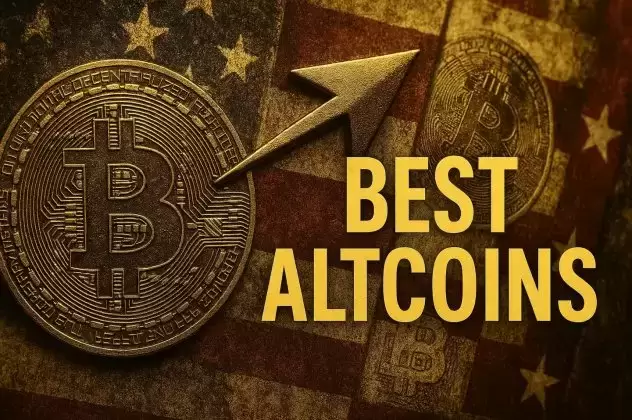 |
|
 |
|
 |
|
 |
|
 |
|
 |
|
 |
|
 |
|
 |
|
 |
|
 |
|
 |
|
 |
|
 |
|
 |
|
Rust
Builder: Stu
Language(s): Rust
Contributes To: CTV Prototypes, Char Network
Work(s/ed) At: ZBD
Before Bitcoin, Stu spent his days working as a Windows System Administrator and in IT Support. His routine consisted of long boring days of sitting in a chair engaging in monotonous maintenance work, reconfiguring systems, and resetting passwords for users who’d forgotten them.
It was the kind of job where a problem occurring that actually requires you to engage your attention in a meaningful way is so rare an occurrence that you wind up sitting around hoping for something like that to happen most of the time.
Stu spent most days just browsing through Reddit threads during his copious amounts of downtime. But this turned out to not be such a bad scenario in the end, as this was how Stu found himself pulled into the Bitcoin space around 2017.
Like many Bitcoiners, or rather soon-to-be Bitcoiners, back in that period, Stu got sucked into the Initial Coin Offering (ICO) and altcoin frenzy of the time. Also, like many Bitcoiners around that time, he wound up getting burned financially by some bad investments in random unknown projects in which he probably shouldn’t have invested in the first place.
Inevtably the gravity of Bitcoin pulled him down the proverbial rabbit hole.
After a few years of learning more deeply about Bitcoin, Stu hit a period of frenzy and quit his job at the peak of the 2021 bull market to look for opportunities to work in the Bitcoin space. By that time the programming language Rust had become widely used in different Bitcoin projects and libraries, so Stu began learning it so that he could contribute to Bitcoin.
Towards the end of 2022, his search for a job in the space ended when he was hired by Michael Tildwell to work at ZBD, a company that integrates bitcoin payments into videogames using the Lightning Network.
Working At ZBD
Stu worked DevOps at ZBD, but in his free time he kept working at prototype Rust projects.
“Most of my side projects are related to what I was interested in at the time, as I was working at ZBD I started making games that could use bitcoin,” Stu told Bitcoin Magazine.
To start, he built a multiplayer web game, rain.run, based around players collecting lightning bolts for rewards in satoshis, to get more familiar with building applications that have to talk to each other over a network. Afterwards he built a simple connect4 game played over the Nostr protocol.
“[This] was a great way to learn how Nostr worked,” said Stu.
“I attended btc++ in Austin in 2024, which was the Script edition.” The four day conference was the most dense forum for discussion around bitcoin script improvements and covenants in the last year or so.
“There seemed to be, at the time, some of a consensus developing for covenants on Bitcoin,” recalled Stu.
“This got me really interested in how Bitcoin script worked and [led] me to experimenting with Taproot and Bitcoin scripts…” he added.
“I didn’t really end up with much but it was a great way to learn how scripts worked.”
TABConf, Payment Pools, and CTV
In 2024, Stu attended TABConf, another developer-focused conference, which is held yearly in Atlanta, Georgia. The conversations in Atlanta also revolved heavily around covenants.
Like all developer-focused conferences, TABConf put on a hackathon. Stu chose to build a project using Discreet Log Contracts (DLCs), which enabled users to bet on the outcome of chess matches. It became very obvious to Stu that building software around pre-signing large numbers of transactions introduced a lot of complexity for developers.
Discussing this issue, he said: “The answer to this problem seemed to be CHECKTEMPLATEVERIFY (CTV). As I wanted to learn more about covenants, CTV seemed like a good place to start, so I started integrating CTV into my DLC chess project. I couldn’t believe how simple it made everything…”
Stu went on to build a proof-of-concept prototype of a Payment Pool using CTV. Payment pools are a very basic layer 2 system where groups of larger than two share control over a single unspent bitcoin output.
“One way we can scale bitcoin to be used by everyone, without using centralized third parties, is for users to share UTXO’s,” he said when asked why he chose to work on a proof-of-concept for a payment pool. “Payment pools are a great way to do this, especially alongside other layer 2 solutions such as Lightning or Ark.”
Covenants
Covenants have become a contentious issue in the discussion about where to take Bitcoin going forward. Every developer has their personal opinion on them, and Stu is no exception.
“
Disclaimer:info@kdj.com
The information provided is not trading advice. kdj.com does not assume any responsibility for any investments made based on the information provided in this article. Cryptocurrencies are highly volatile and it is highly recommended that you invest with caution after thorough research!
If you believe that the content used on this website infringes your copyright, please contact us immediately (info@kdj.com) and we will delete it promptly.
-

- Bitcoin (BTC) reserve, monetary policy, and fears over the trade war are stirring the markets
- Apr 05, 2025 at 04:50 am
- input: Crypto markets declined in March due to concerns over the ongoing trade war and monetary policy. Still, traders have not given up on Bitcoin, according to a new report from Binance.
-

-

-

- Bitcoin (BTC) Price Prediction: Is the Correction Over? Bulls Struggle to Reclaim $90,000 Level
- Apr 05, 2025 at 04:45 am
- Bitcoin is currently trading above critical support, but bulls are struggling to reclaim the $90,000 level — a threshold that could signal the start of a meaningful recovery rally.
-

-

-

-

-

- Bitcoin's environment experiences fundamental shifts because Bitcoin halving combined with decentralized finance (BTCFi) changes how Bitcoin functions and shapes its marketplace
- Apr 05, 2025 at 04:30 am
- In April 2024, Bitcoin underwent reward mining cuts to 3.125 BTC, which strengthened Bitcoin's deflationary properties while drawing more investors to observe its future price evolution.



























































